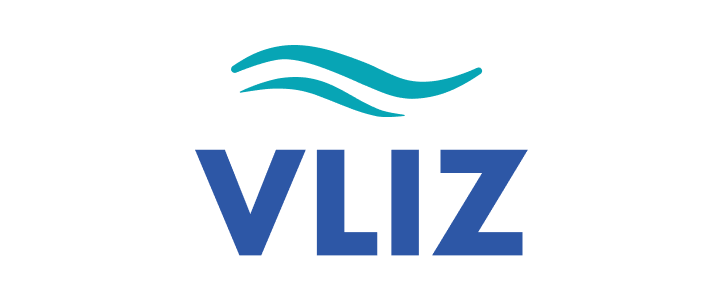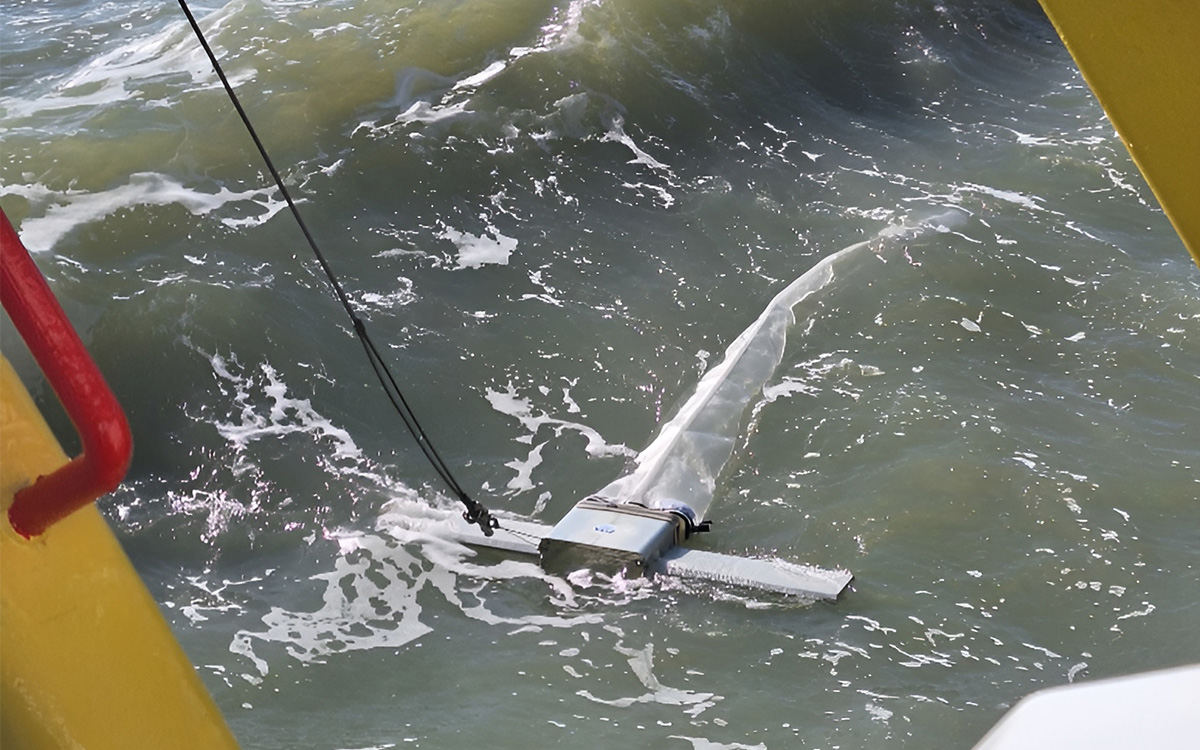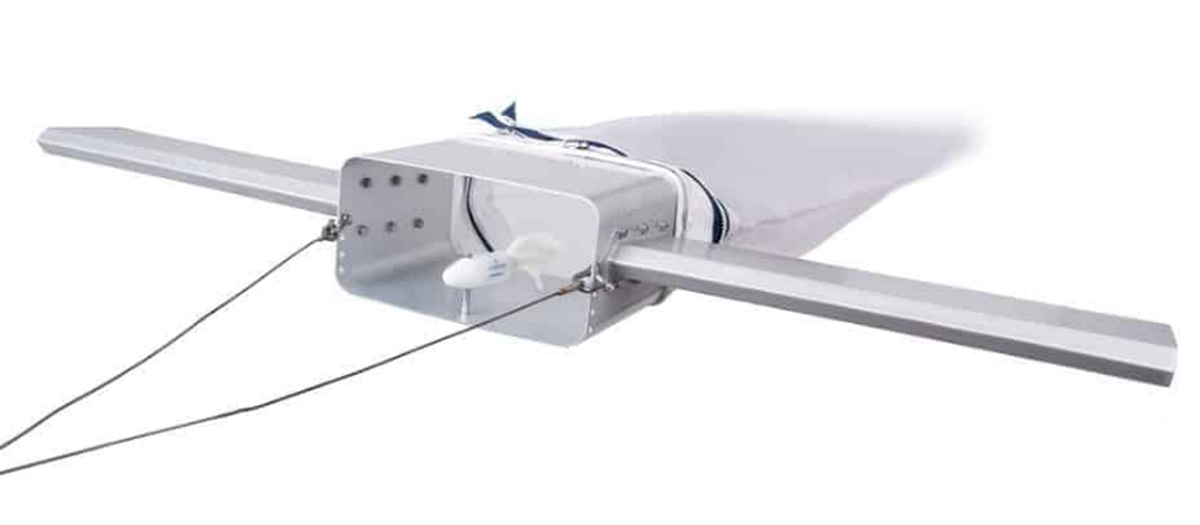General Description
The Manta net is a device initially designed to sample plankton within in the first few centimetres of the water column, in open but calm seawaters, rivers, or lakes. It has been adapted as a sampling method for microplastics since microlitter can occur in the environment within the same compartments as plankton, it can sample large volumes of water in a standardized way, it is widely used and available, and it is able to collect a large number of microplastics for further analysis in a cost-efficient way.
The device is composed by a metal frame where a plankton net is attached. This frame can have ‘wings’ or floats mounted to the sides that lift the frame up and provide stability. The frame can be disconnected from the net, allowing for independent transportation and storage.
The working principle of the Manta net is that it is attached to a vessel with cables, and it is towed in the sampling locations, filtering the surface water, and collecting the litter. The litter size lower limit for microliter collection by the device depends on the mesh size of the used net.
Apart from the different mesh sizes and net opening dimensions, the trawling duration, speed, and distance can be established in order to provide method harmonization and a standard sampling protocol.
Manta Net
The use of a Manta net is comparable to the Ferrybox, but the Manta net i) can handle larger volumes of water before clogging (> 5 m³); ii) is sea state dependent (wave, currents); and iii) was developed for surface water floating plastics and depends on a trawling device (usually a vessel), while the Ferrybox is for under water sampling but it can also be used from riverbanks if coupled to a portable power source. Given the complementarity of Manta net and Ferrybox, both technologies will be used in the project.
Bouwens J., Asselman J., Vercauteren M., Catarino A.I., Everaert G., 2021. PLUXIN: Optimized sampling and sample processing protocol (for microplastic) (D4.1a). VLIZ, UGent, 15/01/2021, Ostend, Belgium, 29 pp. https://hdl.handle.net/10.48470/12
INSPIRE partner responsible for implementation:
VLIZ, Vlaams Instituut Voor de Zee – Flanders Marine Institute
Belgium

- Goal: Detection
- Target Litter: Microplastics and other microlitter in surface water
- INSPIRE Use Cases: Scheldt, Po, Douro and Rhine
- Contact: Mariana Miranda
- Email: mariana.miranda@vliz.be
- Contact: Ana Catarino
- Email: ana.catarino@vliz.be
- Website: vliz.be/en

